Hi Mom! Love, Everyone
I need to start this journal off appropriately. That is to say, to notify the mothers, fathers, and loved ones of all of the research team members here at Mulajokull that we have arrived safe and healthy! We have had an absolute great time getting to know one another, and we worked quite well as a team setting up our base camp throughout the entire day. From James and Reba digging the latrine (whew...thanks you two!), to Neal, Tom, and Luke heading to the drumlins to scout our sampling sites for tomorrow, to Libby, Sandy, Geoff, and myself working hard to set-up tent and organize field equipment, we did an awesome job!
Moving Day
We started off the day moving all of our equipment (and people!) by helicopter from our staging area near the 4x4 road to the base camp in the forefield of Mulajokull. Each one of the sling load bags had to be packed with care so that nothing spilled over the top or within the bag, and so the pilot could safely maneuver through the high winds with the loads for the flight . Each trip lasted about 25-30 minutes including travel and loading/unloading sling bags, and we successfully moved everything to base camp in four trips.
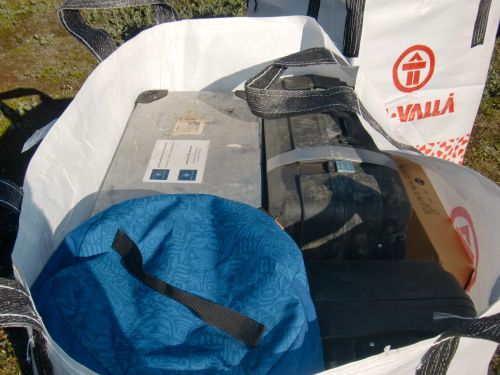
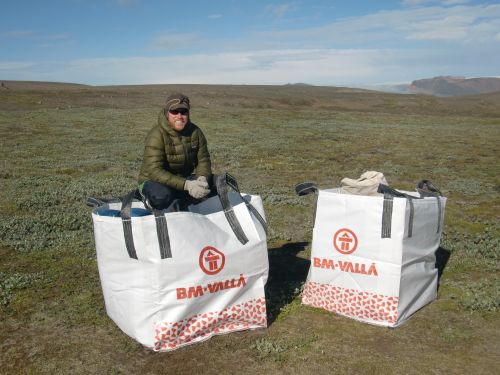
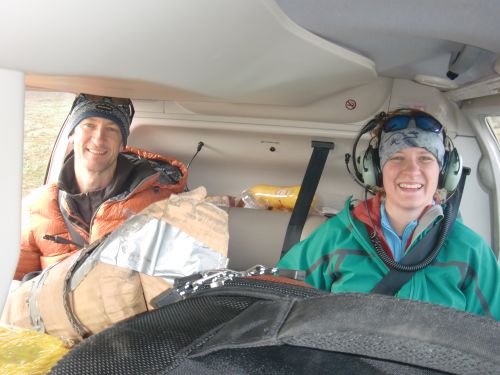
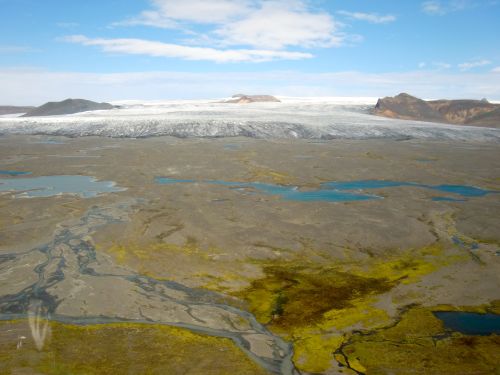
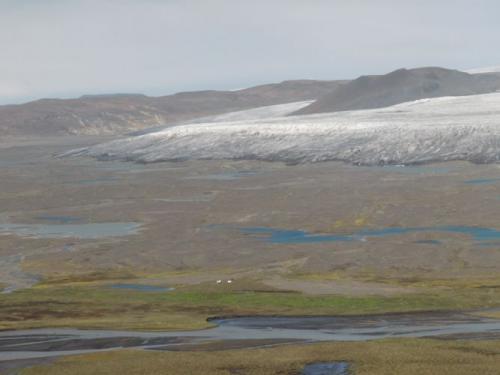
Time to Burrow In
We spent the rest of the day unpacking, and arranging base camp in a manner that is conducive to the excessive and consistent prevailing winds. While unloading, it is crucial to keep light items weighted down by heavy items so that they do not fly away in the wind, and all tents need to be arranged with the broad sides running parallel to the wind direction. This helps to keep the tent more stable and quiet in the high winds. We dug holes in the ground for our coolers to keep things cold/frozen and hauled many gallons of water for drinking and cooking. Before hauling water, however, we first decided where the latrine and gasoline/kerosene storage cans would be located so that we would not pollute our drinking water for the rest of the trip! In the midst of all of this, we each took some time to set-up our own personal burrows and organize all of our gear and clothing within our tents.
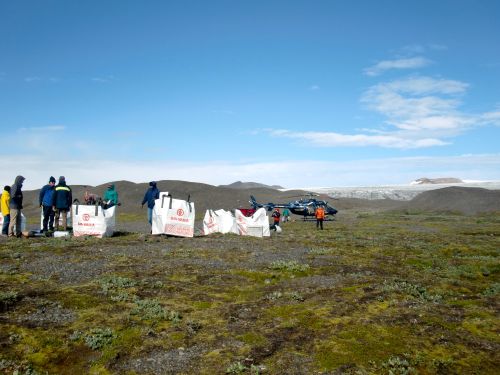
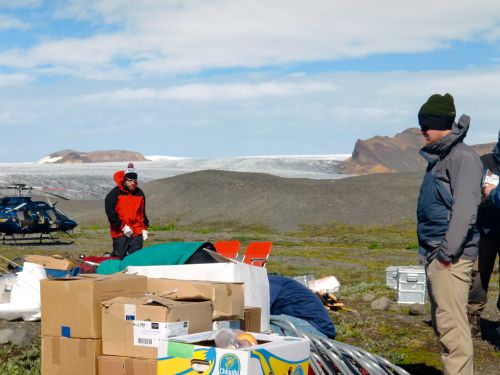
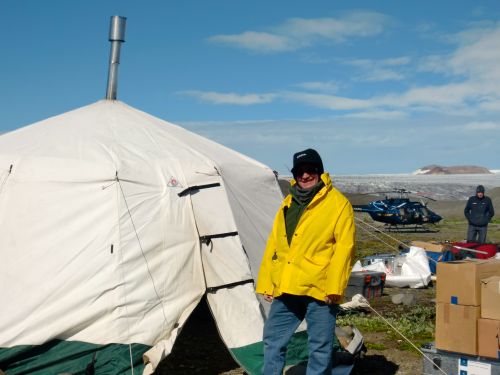
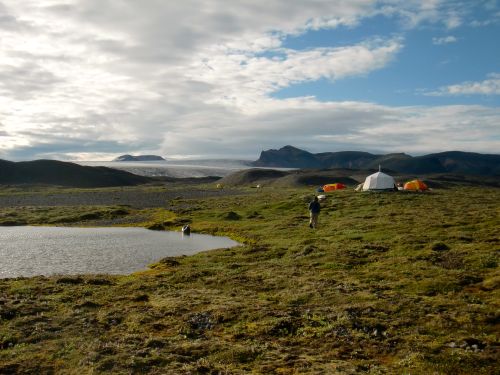
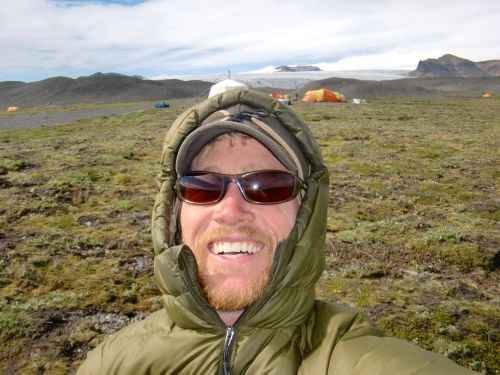
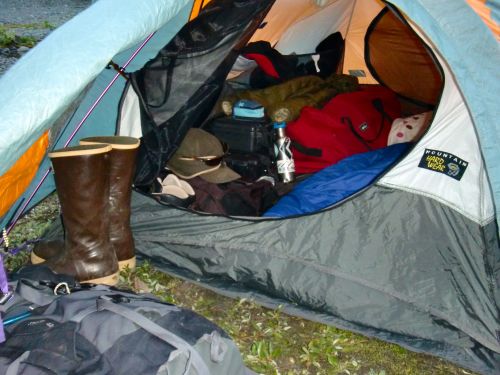
Tomorrow Is the Big Day
Tomorrow, August 2nd, is our team's first day collecting samples from the drumlins. Shortly before supper tonight, Dr. Iverson (Neal) and Dr. Hooyer (Tom) gave the team a run-down on data collection methods and planning for the day. Over the course of the next 8 days we will be collecting the following data:
approximately 500-1000 individual till (glacial sediment) samples in small plastic cubic containers measuring 2cm x 2cm. These will be taken back to U of Iowa and U of Wisc-Milwaukee for analysis on magnetic fabric and consolidation. Each of these tests will shed light on how exactly the glacial till may have moved at the base of Mulajokull during its last surge (fast moving growth/advance) to form these mysterious landforms.
5-10 samples of till that will be excavated quite carefully in order to measure their densities. Knowing the density of these samples (till and water included) will further aid in laboratory analysis of consolidation testing in the lab back home to figure out what/how forces and pressures of Mulajokull's glacial ice pushed the till into the drumlin formations.
as much radar data as we can get using the GPR (ground penetrating radar) in order to collect spatial data on each layer of till within the drumlin field as a whole. This will allow the team to better understand how each surge and retreat of Mulajokull may have affected the deposition of till to create drumlins. Thanks to post-doctorate researcher Dr. Zoet (Luke), the GPR data will provide the magnetic fabric and consolidation results continuity throughout much of the drumlin field.
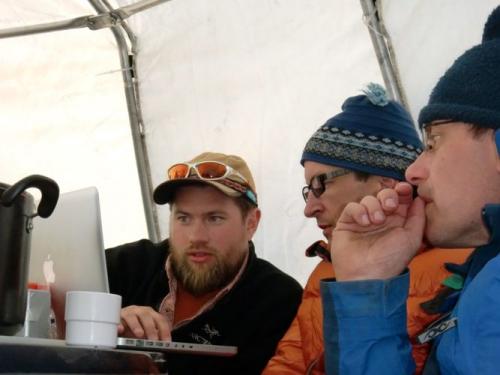
Much, much more on each of these types of data collection methods, what the data mean, and how they will help to understand drumlins to come in the next week of journals.
It's about to get real exciting folks. Let's just say it's going to involve jackhammers, LOTS of digging and excavating, glacier trekking, and a whole lot of fun! Thanks for following along, and if you have any questions just use the Ask the Team Forum and I can get back to you as soon as I am able. Takk!
Cheers,
Jamie


Comments